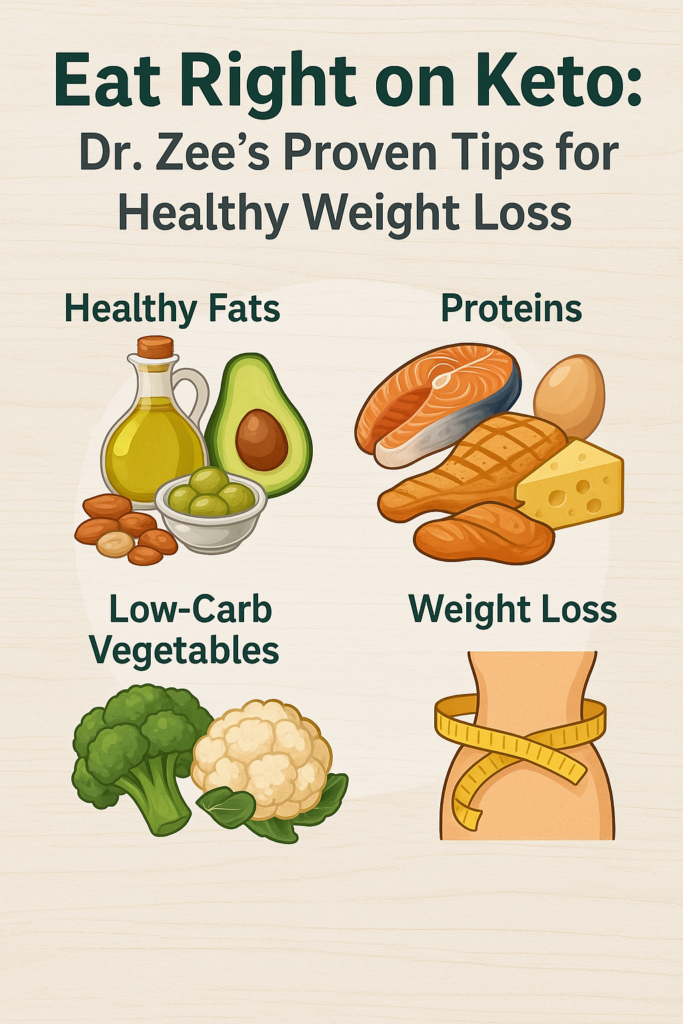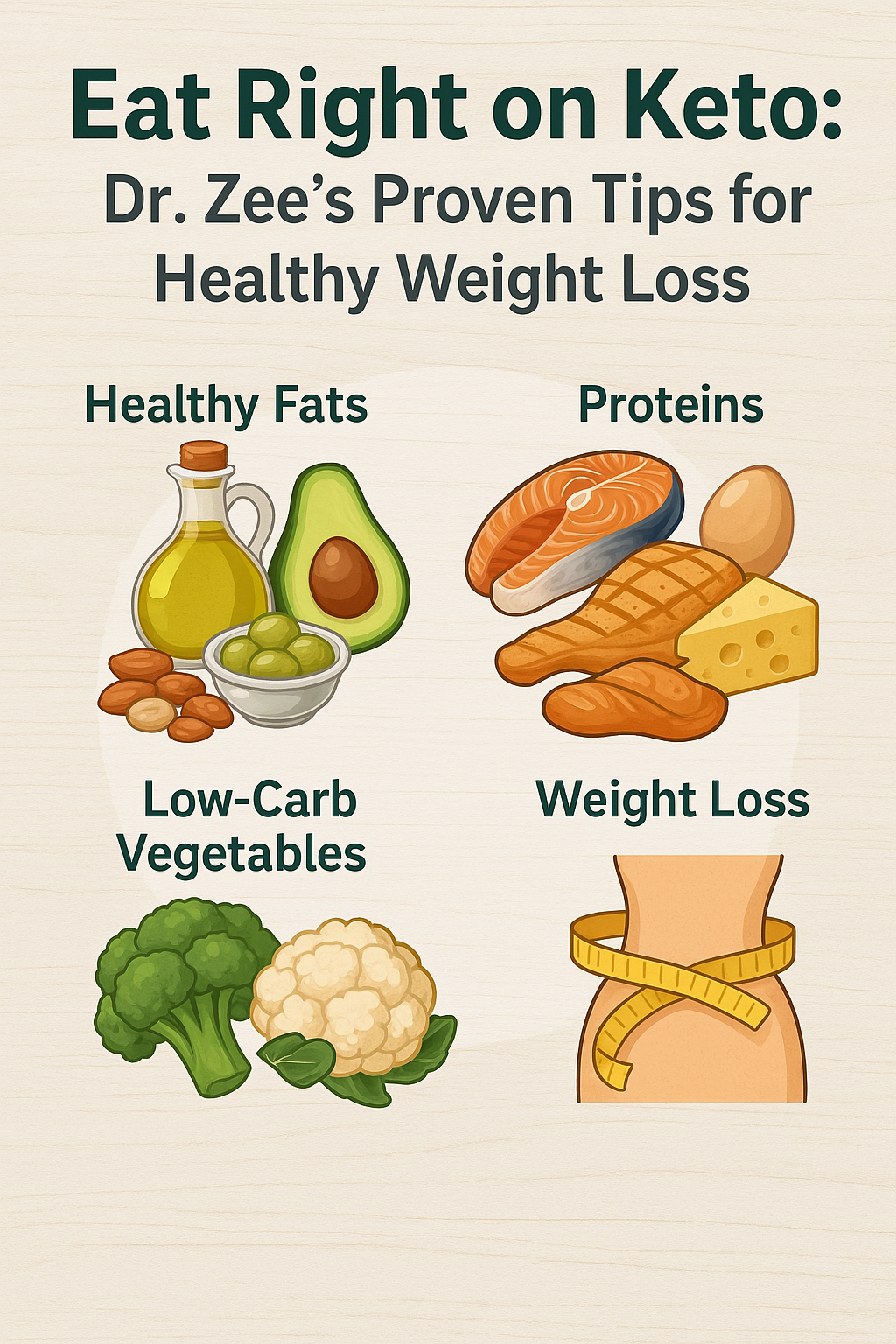Introduction
The ketogenic (keto) diet has gained immense popularity due to its potential benefits in weight loss, improved energy levels, and better metabolic health. In the video “Dr. Zee: Guide to Healthy Keto | What to eat? | वजन घटना,” Dr. Zee provides a comprehensive overview of what to eat on a healthy keto diet. This blog post will break down the key takeaways from the video, offering practical tips for following a sustainable and nutritious keto lifestyle.

Understanding the Keto Diet
The keto diet is a low-carb, high-fat eating plan that helps the body enter a state of ketosis, where it burns fat for energy instead of carbohydrates. While many people focus on reducing carbs, it’s equally important to choose healthy fats and nutrient-rich foods to maintain overall well-being.
What to Eat on a Healthy Keto Diet
1. Healthy Fats
Fats make up the majority of your calorie intake on keto. Opt for sources that provide essential nutrients and avoid unhealthy, processed fats. Recommended options include:
- Avocados – Packed with healthy monounsaturated fats and fiber.
- Olive Oil – Great for cooking and salad dressings.
- Coconut Oil – Contains medium-chain triglycerides (MCTs) that boost ketone production.
- Nuts & Seeds – Almonds, walnuts, flaxseeds, and chia seeds offer good fats and fiber.
- Fatty Fish – Salmon, sardines, and mackerel provide omega-3 fatty acids.
2. High-Quality Proteins
Protein intake should be moderate but sufficient to preserve muscle mass. Some excellent protein sources include:
- Eggs – A nutrient-dense food with essential amino acids.
- Meat & Poultry – Grass-fed beef, chicken, turkey, and lamb.
- Fish & Seafood – Rich in omega-3s and high-quality protein.
- Tofu & Tempeh – Great plant-based protein options for vegetarians.
3. Low-Carb Vegetables
Non-starchy vegetables provide fiber, vitamins, and minerals while keeping carb intake low. Ideal choices include:
- Leafy Greens – Spinach, kale, arugula, and lettuce.
- Cruciferous Vegetables – Broccoli, cauliflower, cabbage, and Brussels sprouts.
- Zucchini & Bell Peppers – Low in carbs and rich in antioxidants.
4. Dairy & Dairy Alternatives
Full-fat dairy can be included in a keto diet, but it’s important to choose high-quality, unprocessed options:
- Cheese – Cheddar, mozzarella, and goat cheese are keto-friendly.
- Greek Yogurt – Preferably unsweetened and full-fat.
- Butter & Ghee – Ideal for cooking and adding healthy fats.
5. Keto-Friendly Beverages
Staying hydrated is crucial on keto. Recommended beverages include:
- Water – The best choice for hydration.
- Herbal Teas – Chamomile, green tea, and peppermint tea.
- Coffee – Can be consumed black or with a splash of heavy cream.
- Bone Broth – Rich in minerals and beneficial for gut health.
What to Avoid on Keto
For a successful keto experience, avoid foods that can spike blood sugar levels and disrupt ketosis:
- Sugary Foods – Sodas, candies, pastries, and desserts.
- Grains & Starches – Rice, wheat, oats, and pasta.
- Processed & Refined Foods – Fast food, trans fats, and packaged snacks.
- High-Carb Fruits – Bananas, apples, grapes, and pineapples.
Practical Keto Tips for Beginners
- Start Slow – Gradually reduce carb intake to avoid the “keto flu.”
- Stay Hydrated – Drink plenty of water and include electrolytes.
- Plan Your Meals – Prepare keto-friendly meals in advance to stay on track.
- Listen to Your Body – Adjust your diet based on how you feel and perform.
- Consult a Professional – Seek guidance from a healthcare provider before making significant dietary changes.
Conclusion
Dr. Zee’s video provides a helpful guide to adopting a healthy and sustainable keto diet. By focusing on nutrient-dense foods, healthy fats, and balanced protein intake, you can achieve weight loss and overall well-being while avoiding common pitfalls. Remember, the key to success with keto is maintaining a balanced approach and making choices that support your long-term health.
Are you planning to start keto? Share your thoughts and experiences in the comments below!

